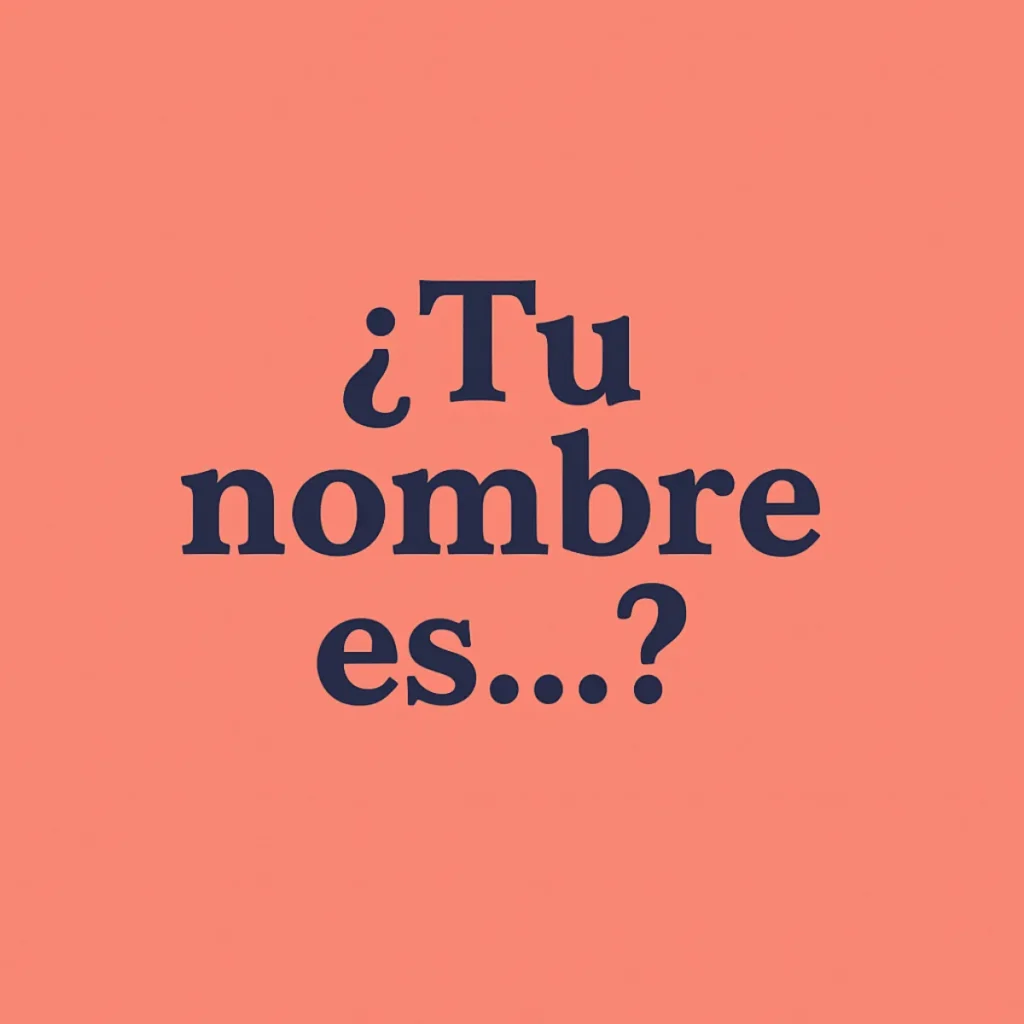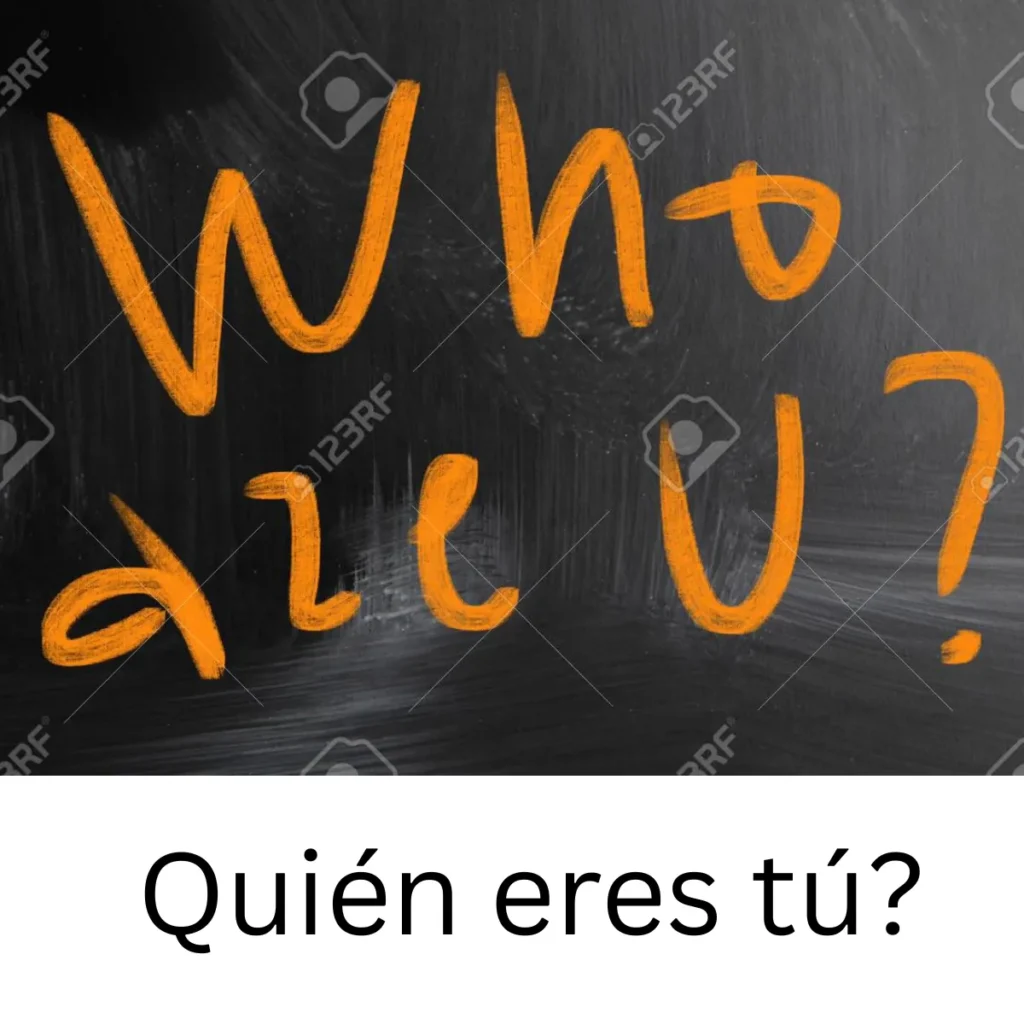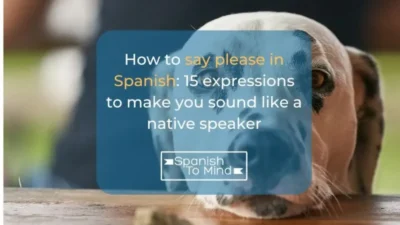How to Say What’s Your Name in Spanish is one of the first things you’ll want to learn when starting conversations in Spanish. If you’re traveling, making new friends, or just practicing your Spanish skills, this phrase helps you connect instantly.
In this guide, we’ll show you how to say what’s your name in Spanish in both formal and informal ways—plus give you pronunciation tips and real-life examples.
Learning how to say what’s your name in Spanish also builds confidence in small talk and cultural understanding.
Say What’s your name in Spanish Examples
Let’s dive into 15 common and useful ways to say What’s your name? in Spanish, complete with real conversation examples and a bit of cultural or historical context for each phrase.
15 phrases table for How to Say What’s Your Name in Spanish
🟢 = Casual | 🔵 = Polite | 🟣 = Formal
| # | Spanish Phrase | English Meaning | Tone |
|---|---|---|---|
| 1 | ¿Cómo te llamas? | What’s your name? | 🟢 Casual |
| 2 | ¿Cómo se llama usted? | What’s your name? | 🟣 Formal |
| 3 | ¿Cuál es tu nombre? | What is your name? | 🔵 Polite |
| 4 | ¿Cuál es su nombre? | What is your name? | 🟣 Formal |
| 5 | ¿Qué nombre tienes? | What name do you have? | 🟢 Casual |
| 6 | ¿Qué nombre tiene usted? | What name do you have? | 🟣 Formal |
| 7 | Tu nombre, ¿cuál es? | Your name, what is it? | 🟢 Casual |
| 8 | Su nombre, ¿cuál es? | Your name, what is it? | 🟣 Formal |
| 9 | ¿Me dices tu nombre? | Will you tell me your name? | 🟢 Casual |
| 10 | ¿Podría decirme su nombre? | Could you tell me your name? | 🔵 Polite |
| 11 | ¿Cómo es tu nombre? | How is your name? | 🟢 Casual |
| 12 | ¿Cómo es su nombre? | How is your name? | 🟣 Formal |
| 13 | ¿Con qué nombre te conocen? | By what name are you known? | 🔵 Polite |
| 14 | ¿Con qué nombre lo conocen? | By what name are you known? | 🟣 Formal |
| 15 | ¿Quién eres? | Who are you? | 🟢 Casual |
1. ¿Cómo te llamas?
(How do you call yourself?)
Example:
👤 User A: ¡Hola! ¿Cómo te llamas?
👤 User B: Me llamo Laura. ¿Y tú?
Origin:
This is the most standard and widely taught phrase in Spanish classes. It’s informal and used with people your age, children, or anyone in casual settings.
Use: Informal, friendly, universal.
2. ¿Cómo se llama usted?

(What is your name? – formal)
Example:
👤 User A: Buenas tardes. ¿Cómo se llama usted?
👤 User B: Me llamo Don Carlos. Mucho gusto.
Origin:
This is the formal version of “¿Cómo te llamas?” used in respectful or professional situations.
Use: Formal, respectful — use with elders, strangers, or in business.
3. ¿Cuál es tu nombre?
(What is your name?)
Example:
👤 User A: Disculpa, ¿cuál es tu nombre?
👤 User B: Soy Andrés. ¿Y tú?
Origin:
A direct translation of “What is your name?” Though grammatically correct, it’s less commonly used in conversation and more in official forms.
Use: Neutral to slightly formal.
4. ¿Cuál es su nombre?
(What is your name? – formal)
Example:
👤 User A: Señorita, ¿cuál es su nombre?
👤 User B: Mi nombre es Gabriela Torres.
Origin:
The formal counterpart to “¿Cuál es tu nombre?”, used in polite interactions.
Use: Professional settings, interviews, formal introductions.
5. ¿Cómo te llamas tú?
(What’s your name – with emphasis)
Example:
👤 User A: Me llamo Diego. ¿Cómo te llamas tú?
👤 User B: Yo soy Mateo.
Origin:
Same as “¿Cómo te llamas?”, but adds emphasis using “tú.” Common in conversations for clarification or emphasis.
Use: Casual, slightly emphatic.
6. ¿Tu nombre es…?
(Is your name…?)

Example:
👤 User A: ¿Tu nombre es Ana?
👤 User B: ¡Sí! ¿Nos conocemos?
Origin:
Used when you’re guessing or confirming someone’s name.
Use: Casual, helpful when you’re unsure.
7. ¿Me puedes decir tu nombre?
(Can you tell me your name?)
Example:
👤 User A: Disculpa, ¿me puedes decir tu nombre?
👤 User B: Claro, me llamo Mariana.
Origin:
A polite and indirect way of asking for someone’s name.
Use: Polite, neutral — use with someone you’ve just met.
8. ¿Cómo se llama él/ella?
(What is his/her name?)
Example:
👤 User A: ¡Tu perro es lindo! ¿Cómo se llama él?
👤 User B: Se llama Max.
Origin:
Useful for asking someone else’s name (third-person).
Use: Neutral, casual.
9. ¿Quién eres tú?

(Who are you?)
Example:
👤 User A: ¡Hola! ¿Quién eres tú?
👤 User B: Soy Juan, el primo de Marta.
Origin:
This means “Who are you?” and can sound direct or suspicious in some contexts, but playful in others.
Use: Casual, careful with tone.
10. ¿Cómo dijiste que te llamas?
(What did you say your name was?)
Example:
👤 User A: Perdón, ¿cómo dijiste que te llamas?
👤 User B: Me llamo Ernesto.
Origin:
Useful when you didn’t hear the name the first time. More polite than asking again with “¿Cómo te llamas?”
Use: Conversational, respectful.
11. ¿Cuál es tu apodo?
(What’s your nickname?)
Example:
👤 User A: ¿Cuál es tu apodo?
👤 User B: Me dicen “Lucho”.
Origin:
“Apodo” means nickname, often used among friends or when someone uses a short form of their name.
Use: Friendly, casual.
12. ¿Y tú cómo te llamas?
(And what’s your name?)
Example:
👤 User A: Soy Julia. ¿Y tú cómo te llamas?
👤 User B: Yo soy Camila. Mucho gusto.
Origin:
This is the follow-up question after introducing yourself — very common in natural dialogue.
Use: Very common in mutual introductions.
13. ¿Tú eres…?
(Are you…?)
Example:
👤 User A: ¿Tú eres Javier?
👤 User B: Sí, soy yo.
Origin:
Used when you think you recognize someone and want to confirm.
Use: Casual, observational.
14. ¿Cómo te dicen?
(What do they call you?)
Example:
👤 User A: ¿Cómo te dicen por aquí?
👤 User B: Me dicen Chino.
Origin:
Common in Latin America, especially in places like Mexico and Argentina. Refers to nicknames or popular names people are called.
Use: Informal, regional.
15. ¿Me recuerdas tu nombre?
(Can you remind me of your name?)
Example:
👤 User A: Perdón, ¿me recuerdas tu nombre?
👤 User B: Claro, soy Alicia.
Origin:
Polite way to ask someone’s name again if you forgot.
Use: Respectful and gentle.
FAQs
- What is the basic way to say “What’s your name?” in Spanish?
The most common phrase is “¿Cómo te llamas?” (informal). - How do you pronounce “¿Cómo te llamas?”
It’s pronounced KOH-moh teh YAH-mas. - Is “¿Cómo te llamas?” formal or informal?
It’s informal, used with friends, kids, or people your age. - How do you ask politely in formal situations?
Say “¿Cómo se llama usted?” — it’s the respectful version. - What does “¿Cómo te llamas?” literally mean?
It literally means “How do you call yourself?” - How do you answer “¿Cómo te llamas?” in Spanish?
Say “Me llamo…” followed by your name (e.g., Me llamo Ana). - Can I also say “¿Cuál es tu nombre?”
Yes, it means What is your name? — more direct but still correct. - Which version is more common in daily life?
“¿Cómo te llamas?” is the most natural and common. - How do you ask someone’s name in a group?
You can say “¿Cómo se llaman?” — means What are your names? - How do you say “Nice to meet you” after learning their name?
Say “Mucho gusto” — it means Nice to meet you!
Conclusion:
Now that you’ve learned how to say what’s your name in Spanish, you’re ready to start conversations and build connections with native speakers. Whether you’re traveling or learning Spanish for fun, this simple phrase helps you sound more natural and respectful.
Practice often, and soon it’ll feel like second nature to greet and introduce yourself confidently.



